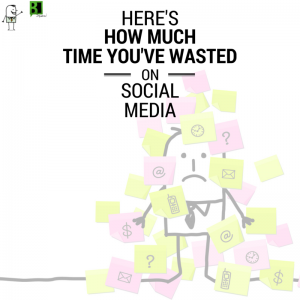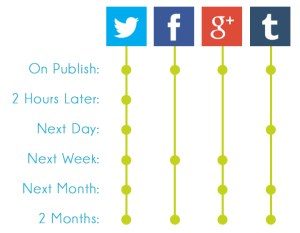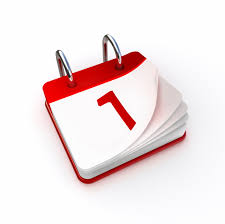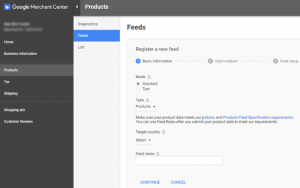We regularly get advice from our friends, family, colleagues, hell even strangers shouting in the streets, on what to buy, what to watch, what to eat, and what to wear. But before we execute that purchase, we tend to look at what others have said about that product or service (even the stranger shouting), in hopes to avoid the dreaded buyer’s remorse. Once we do make that purchase, we then feel the burning desire to share this buyer-experience through social media posts, conversations, emails, and the occasional shouting of our own.

We all have that lovely lady or gent on our Facebook feed that’s constantly spewing (er, stating) their personal reviews of various products. Love it or hate it, when wondering whether to purchase certain items, that friend’s list finds its way into your head.
So, what does any of this have to do with referral marketing programs, you ask? Well, in the most basic form, we trust our friends, families, and sometimes our coworkers when they suggest products to us. Any savvy marketer knows that a key incentive for people to refer their friends (now commonly known as a friend invite) to their business is by handing out rewards, premium content, or free access in exchange for those referrals.
In this post, we’ll talk about why you would want to create referral programs for your business, what drives their success, and highlight 9 brands as examples that have executed excellent referral programs—all for your inspiration purposes.
So, why would you want to use referral programs for your business?

For new businesses especially, before you can start spending thousands of dollars on advertising, you first need to acquire trust from your audience and potential customers. According to Nielsen’s Trust in Advertising Report, referrals are the most trustworthy form of advertising. Customers are 4x more likely to make a purchase (we told you) from a referral over any other form of advertising ie: social media ads, billboards, tv ads, and radio ads.
Customers who are referred are 18% more loyal than customers who are acquired through any other form of marketing. Having loyal customers and brand ambassadors can impact a business in many positive ways but, the most important thing loyal customers can affect is decreasing your churn-rate, which is the number of people who leave or cancel during a set period of time.
On top of that, referred customers have a 16% higher lifetime value than customers who weren’t referred. Which means that offering referral programs will provide your company a huge opportunity to increase profit.
How to make sure your referral program succeeds
Just like any marketing tactic, there are key elements to include in your referral program in order for it to succeed. Below are 4 ways you can ensure your referral traffic keeps increasing:
- Provide value
This might seem obvious but by providing your referrers with an incentive that they can’t resist adds value for them. Doing this will increase trust and credibility.
- Engage your audience
Ah, the power of keeping someone’s attention for more than 2.5 seconds (how are we doing by the way?). Getting your audience to ‘do something’ for their benefit drives them to engage with your brand or product, and this will enhance their user experience with your referral program.
- Make it a choice
One major turn-off for customers is the feeling that they are being pressured or aggressively pushed into making the “right” choice. When creating a referral program make sure you allow people to choose to opt in. Doing so relieves the pressure of using your product or service.
- Keep it simple and above all, easy
Don’t make it take more than 5 minutes to complete the referral process. That’s all we have to say at this time (keeping it basic).
Got it? Cool, now check out the brands we chose to showcase their successful referral programs.
#1 – Paypal
PayPal has inspired many companies to use referral programs to drive profit and increase their user base. David Sacks, the original COO of PayPal said that they, “literally paid people to invite their friends.” This initiative helped PayPal achieve 7 to 10% daily growth. Daily! When they achieved their goals, they dropped the Refer-A-Friend bonus, however kept it for Merchants, which they later dropped again after they reached their goals. This kind of referral program is a way for companies to achieve customer acquisition goals quickly and effectively.

The takeaway: set referral goals and crush them.
#2 – Dropbox
Do you have a Dropbox account? If you don’t you should really be aware of how useful it is, but that’s not what this blog is about. Try and remember how you signed up for it because (spoiler alert) it was more than likely via a “friend invite.” Inspired by PayPal’s refer a friend program, Dropbox’s “friend invite” feature increased signups by 60%, and 35% of daily signups are from their referral program. Their rprogram worked well because they provided a double-sided incentive, where both the referrer and friend got rewarded. The reward given was extra storage space, which is important to the user’s experience with the product.

The takeaway: don’t be a greed-monster, make the referral rock for both parties.
#3 – Dollar Shave Club
If you haven’t heard about this yet, you should watch the youtube video because their marketing strategy is pure genius. Having a promo video go viral never hurts, but another key factor of their growing success was their friend referral program. After becoming a Dollar Shave Club customer, individuals are asked to share the site with friends. For everyone that follows those shared links, the referrer receives a $ 5 credit towards their next purchase.
Michael Dublin, CEO of Dollar Shave Club, shares that over 50,000 new customers are referred to DSC each month. This has helped them to create a massive online brand and Dublin recognizes that word of mouth is extremely important to the business. Also, most of their marketing is hilarious:

The takeaway: taking risks pays off. Don’t be afraid to be bold, funny, and timely with your referral program ideas.
#4 – NatureBox
NatureBox utilized current events for their referral program win, by offering a discount on their snacks for the Super Bowl. Customers could get a promo code for themselves and the referred friend (taking a page out of Drop Box’s book there) when they shared the incentive via social media. The offer could be shared through email as well, so NatureBox really had all of their bases covered to ensure maximum reach.

The takeaway: strategize for your referral program to take shape around a massive event to boost conversions.
#5 – Airbnb
Airbnb’s referral program provides their referrers an opportunity to earn up to $ 125 CAD (depending on your currency) for everyone they invite. They provide people 4 email options, which is great for those who have an email address for all 4 types of emails platforms they’re presenting: Gmail, Windows Live Hotmail, Yahoo! Mail, and AOL. On top of that, they also allow their referrers to send their friends an incentive, which in turn comes back to them if their friend ends up travelling or hosting their place. This referral program is a great one to join, especially for frequent travellers who have friends who love to travel too!

The takeaway: let the referral compound on itself, so the more friends, the more the reward.
#6 – LastPass
LastPass truly integrates their referral program into their product. They are a great example of a company that puts their referral program on every page inside of their product. The minimal CTA design doesn’t take over their users’ experience, while still increasing the overall program engagement. Another example of the double-sided reward style, and they really utilize a simple, sleek, promo design for the referral.


The takeaway: simplicity often rules, try a few versions of your program with minimal text and a short CTA.
#7 – Eventbrite
The Eventbrite referral program can be an easy way for referrers to earn extra cash on the side. When people share their custom link and someone signs up via that custom link, the referrer can earn 25% of all ticket fees generated by people they refer for one year. This is an easy way for people to see the value of the referral program, while providing you with the referral traffic you need to increase your user base.

The takeaway: consider the value of your referral program lasting more than a few weeks or months.
#8 – Box
Box took their referral program to a different stream of referral marketing by positioning their referrers as partners in 4 different levels: referral, member partner, choice partner, and premier partner. This is a great way to enhance your credibility, while providing value to your referrers. Partnership with Box begins as a referral partner, but as you refer more people you have the opportunity to progress towards the re-seller program.

The takeaway: creating a tiered program provides your customers with an incentive to progress further with you, building that trust.
#9 – Google partner program
The Google Partners program is Google’s platform for advertising agencies, digital marketing professionals, and other online consultants. This form of a referral program is similar to Box’s, where the referrers are treated as partners. By joining Google Partners, you gain access to special events and trainings, industry research, Google AdWords product updates and more. By having a name like Google beside your brand name, you’re providing your referrer’s credibility and new client opportunities.

The takeaway: partner up, partner! see the value beyond your own brand or company.
To Conclude
Referral programs, at their very core, are about give and take. Like any awesome thing in life, it makes most sense to keep everyone involved feel valued, and retain that value from the exchange. Every business in the world benefits from word-of-mouth that is positive, and it does nothing but reaffirm their brand to their consumer base.Do you know of better examples of referral programs done by other brands? Share them with us in the comments below.
(315)
Report Post







